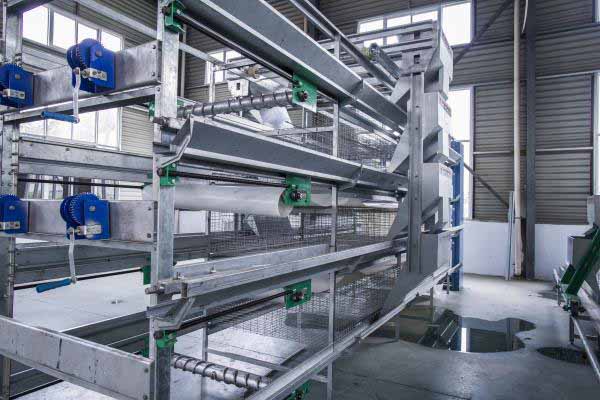Battery Layer Cage System for 50,000 Chickens in Uganda: A Comprehensive Guide
1. Introduction to Battery Cages for Chicken Farming in Uganda
In Uganda, the poultry industry is rapidly growing, and modernizing farming practices is essential for increasing productivity. A battery layer cage system is a highly efficient way to house and manage laying hens. This article explores the benefits and considerations for implementing a battery cage system for 50,000 chickens in Uganda.
2. The Importance of Proper Caging
Battery cages offer several advantages for chicken farming. They provide a controlled environment, reduce the risk of disease transmission, and enhance egg quality. By using battery cages, farmers can achieve higher productivity and better economic returns.
3. Designing the Battery Cage System for 50,000 Chickens
When designing a battery cage system for 50,000 chickens, it is crucial to consider the following factors:
– Space Allocation: Each cage should provide enough space for the chickens to move around comfortably. On average, 0.6 square meters per bird is recommended.
– Cage Dimensions: A standard battery cage measures approximately 75 cm x 50 cm x 45 cm.
– Ventilation: Ensure proper ventilation to maintain a healthy environment. Airflow should be 1 cubic meter per bird per hour.
– Fencing: Use sturdy fencing to prevent birds from escaping and protect them from predators.
– Feeding and Watering Systems: Implement automated systems for feeding and watering to optimize efficiency.
4. Benefits of Implementing a Battery Layer Cage System
– Increased Egg Production: Battery cages can significantly boost egg production, with an average of 300-350 eggs per hen per year.
– Reduced Disease Outbreaks: The confined space minimizes the risk of disease transmission.
– Cost-Effective: Although the initial investment may be high, the long-term economic benefits make it a worthwhile investment.
– Ease of Management: Automated systems simplify the farming process, reducing labor costs.
5. Case Study: Successful Implementation of Battery Cages in Uganda
A Uganda-based poultry farm successfully implemented a battery cage system for 50,000 chickens. The farm reported an increase in egg production from 200,000 to 300,000 eggs per month. The farm also experienced a reduction in disease outbreaks and lower labor costs.
6. Conclusion
Investing in a battery layer cage system for 50,000 chickens in Uganda can lead to significant improvements in productivity and economic returns. By considering the factors mentioned above and implementing a well-designed system, poultry farmers can achieve success in the competitive poultry market.





